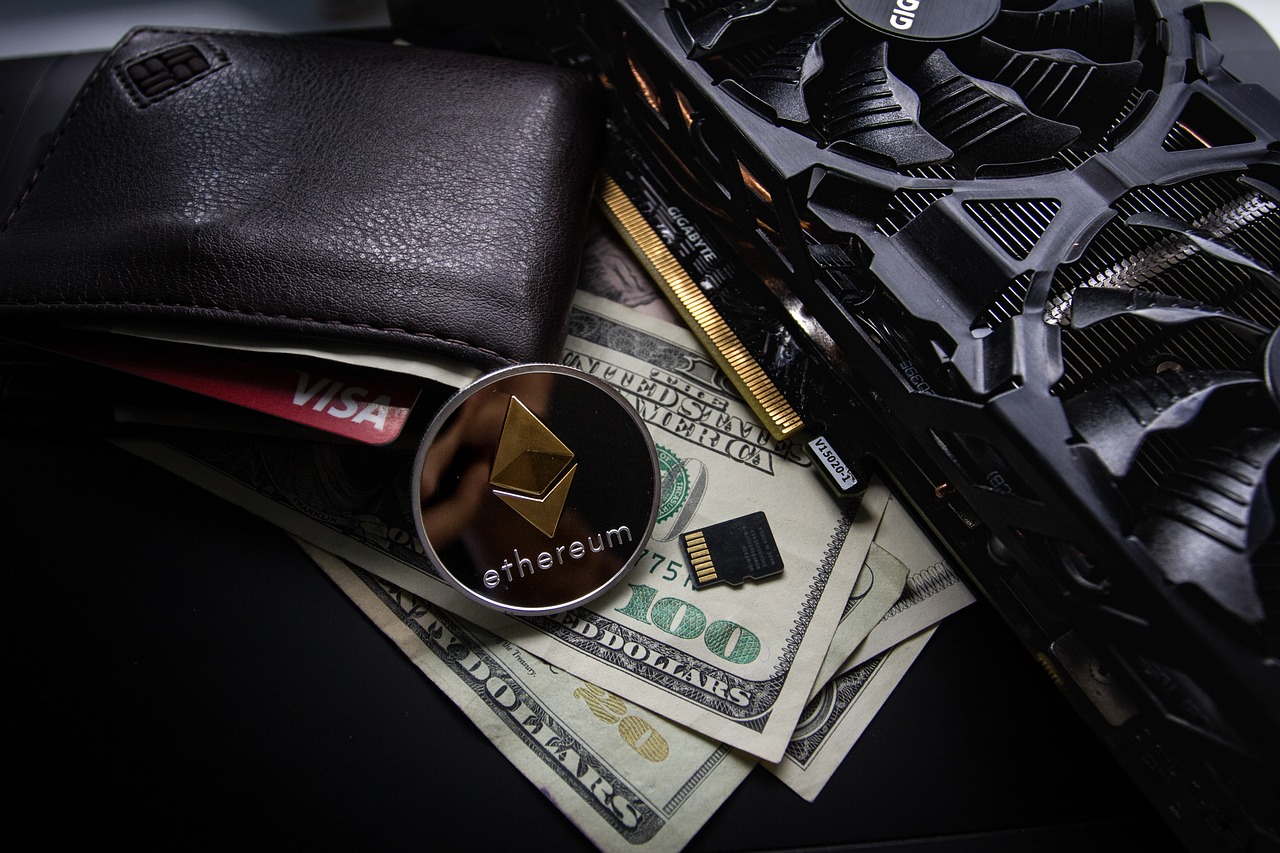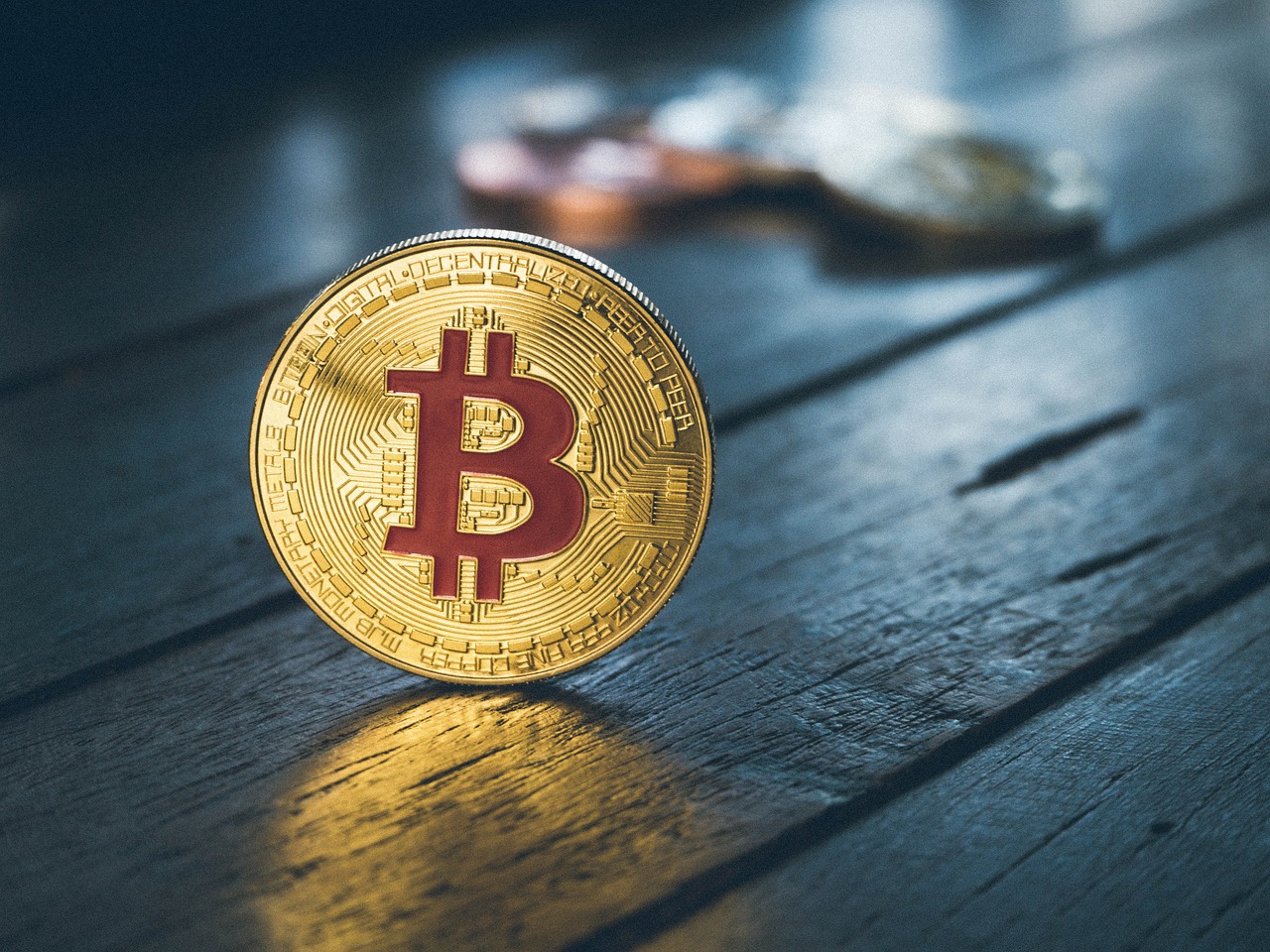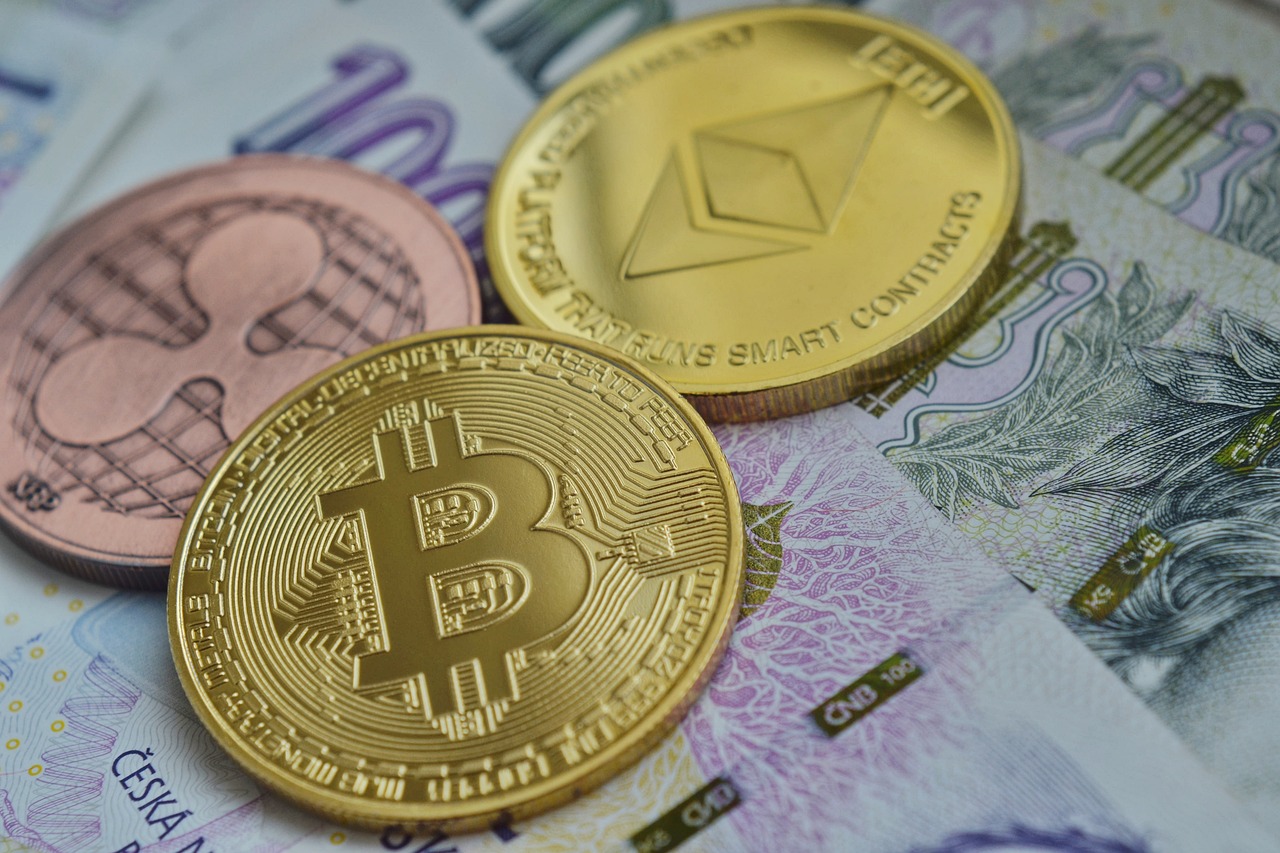The Role of Stablecoins in Crypto Volatility Management
In the fast-paced world of cryptocurrency, where prices can soar or plummet within minutes, stablecoins emerge as a beacon of hope for traders and investors alike. These unique digital assets are designed to maintain a stable value, often pegged to traditional currencies or commodities, making them a vital tool in managing the wild swings of the crypto market. Imagine navigating a turbulent sea; stablecoins are like a sturdy lifeboat, providing a safe haven amidst the stormy waves of volatility that characterize the cryptocurrency landscape.
Stablecoins serve multiple purposes, from facilitating transactions to acting as a hedge against market fluctuations. As we delve deeper into their role, we’ll uncover how they not only stabilize individual portfolios but also contribute to the overall health of the cryptocurrency ecosystem. With their ability to combine the benefits of digital currencies with the stability of traditional assets, stablecoins are revolutionizing the way we approach investing in this unpredictable market.
But what exactly makes stablecoins so effective at managing volatility? To understand this, we need to explore their design and functionality. Stablecoins can be broadly categorized into three types: fiat-collateralized, crypto-collateralized, and algorithmic stablecoins. Each type employs different mechanisms to maintain its value, which we’ll discuss further in the following sections. The interplay of these mechanisms not only defines the nature of stablecoins but also shapes their impact on market stability.
As we navigate through this article, we will also touch upon the challenges posed by market volatility, including factors like market sentiment, regulatory changes, and macroeconomic influences. Understanding these challenges is crucial for grasping the full potential of stablecoins in mitigating risks. So, whether you’re a seasoned trader looking for strategies to safeguard your investments or a newcomer eager to learn about the crypto landscape, this exploration of stablecoins will provide valuable insights into their pivotal role in the realm of cryptocurrency.
Stablecoins are cryptocurrencies designed to maintain a stable value by pegging them to traditional assets. This subheading will explain the different types of stablecoins and their underlying mechanisms.
The cryptocurrency market is known for its extreme volatility. This section will discuss the causes of such fluctuations and their implications for investors and traders.
Several factors contribute to the volatility of cryptocurrencies, including market sentiment, regulatory changes, and macroeconomic influences. This subheading will delve into these elements in detail.
Market sentiment can significantly impact cryptocurrency prices. This section will analyze how emotions and perceptions drive buying and selling behaviors in the crypto market.
Regulatory changes can create uncertainty in the cryptocurrency space. This part will explore how government actions influence market stability and investor confidence.
Traders and investors employ various strategies to manage market volatility. This section will discuss how these approaches can be enhanced through the use of stablecoins.
Stablecoins offer a means for investors to hedge against market volatility. This subheading will examine how they can be used as a protective measure during turbulent market conditions.
Stablecoins enhance liquidity in the cryptocurrency market, allowing for quicker transactions and easier access to funds. This section will highlight the importance of liquidity in managing volatility.
Stablecoins are integral to the DeFi ecosystem, providing stability in a highly volatile environment. This subheading will discuss their role in lending, borrowing, and trading within DeFi platforms.
The future of stablecoins looks promising as they continue to evolve. This section will explore potential developments and their implications for the broader cryptocurrency market.
- What are stablecoins? Stablecoins are cryptocurrencies that are designed to have a stable value, often pegged to fiat currencies or other assets.
- How do stablecoins help with volatility? They provide a stable store of value, allowing traders to quickly convert volatile cryptocurrencies into something more stable.
- Are stablecoins safe? While they reduce volatility, the safety of stablecoins can depend on their underlying mechanisms and the assets backing them.
- Can stablecoins replace traditional currencies? They have the potential to complement traditional currencies, especially in digital transactions, but widespread adoption is still in progress.

Understanding Stablecoins
Stablecoins are a fascinating innovation in the cryptocurrency world, designed to bridge the gap between traditional finance and the volatile nature of digital currencies. At their core, stablecoins aim to maintain a stable value by pegging themselves to traditional assets, such as fiat currencies like the US Dollar, or commodities like gold. This stability is crucial for traders and investors who crave predictability in a market often characterized by wild price swings.
There are several types of stablecoins, each employing different mechanisms to achieve their stability. The three primary categories include:
- Fiat-Collateralized Stablecoins: These stablecoins are backed 1:1 by a fiat currency, meaning for every stablecoin issued, an equivalent amount of fiat currency is held in reserve. Tether (USDT) and USD Coin (USDC) are prominent examples.
- Crypto-Collateralized Stablecoins: Unlike fiat-backed stablecoins, these are backed by other cryptocurrencies. They often require over-collateralization to account for the inherent volatility of the collateral. DAI is a well-known example that uses this model.
- Algorithmic Stablecoins: These stablecoins utilize algorithms and smart contracts to control the supply of the coin based on demand, aiming to maintain a stable price. They do not rely on collateral but instead adjust supply dynamically. An example is Ampleforth (AMPL).
The underlying mechanisms of stablecoins are what make them so intriguing. By pegging their value to more stable assets, they provide a refuge for investors during turbulent times. Imagine being in a stormy sea, where the waves of market volatility threaten to capsize your ship. Stablecoins act as a lifeboat, offering a safe harbor where you can temporarily anchor your assets until the storm passes.
Moreover, the adoption of stablecoins has been accelerated by the rise of decentralized finance (DeFi). In this new financial landscape, stablecoins serve as the backbone for various applications, such as lending, borrowing, and trading. They facilitate transactions without the need for traditional banking systems, thus providing users with greater control over their finances.
As the cryptocurrency market continues to evolve, the role of stablecoins is becoming increasingly significant. They not only help mitigate volatility but also enhance liquidity and accessibility in the market. In a world where uncertainty is the only constant, stablecoins provide a much-needed sense of stability and security for traders and investors alike.

Market Volatility Challenges
The cryptocurrency market is often described as a rollercoaster ride, filled with exhilarating highs and gut-wrenching lows. This volatility can be both exciting and terrifying for traders and investors. But what exactly causes these wild price swings? Understanding the underlying factors can help you navigate this unpredictable landscape. In this section, we will explore the various elements that contribute to market volatility and their implications for those involved in the crypto space.
One of the primary drivers of volatility in the cryptocurrency market is market sentiment. The emotions and perceptions of investors can lead to rapid buying or selling, causing prices to fluctuate dramatically. For instance, a positive news story can trigger a wave of enthusiasm, leading to a surge in prices, while negative news can evoke fear, resulting in a mass sell-off. It's like a game of musical chairs; when the music stops, some investors may find themselves left without a seat, facing significant losses.
Another critical factor is regulatory changes. The cryptocurrency market operates in a relatively unregulated environment compared to traditional finance. However, as governments and regulatory bodies begin to take notice, any announcement regarding new regulations can create a ripple effect. For example, when a country hints at stricter regulations, it can lead to uncertainty, causing traders to panic and sell off their assets. This uncertainty can severely impact investor confidence and, in turn, the overall market stability.
Additionally, macroeconomic influences play a significant role in cryptocurrency volatility. Factors such as inflation rates, interest rates, and global economic conditions can affect investor behavior. For instance, during times of economic uncertainty, investors may flock to cryptocurrencies as a hedge against traditional market downturns, leading to increased demand and price spikes. Conversely, a stable economic environment may lead investors to pull back from riskier assets like cryptocurrencies, contributing to price declines.
To sum it up, the challenges posed by market volatility in the cryptocurrency space are multifaceted. They stem from a combination of market sentiment, regulatory impacts, and macroeconomic factors. Recognizing these challenges is essential for anyone looking to engage with cryptocurrencies. By understanding the dynamics at play, investors can develop strategies to mitigate risks and capitalize on opportunities, ultimately leading to a more informed approach in this thrilling yet unpredictable market.
- What causes cryptocurrency prices to fluctuate? Cryptocurrency prices can fluctuate due to various factors, including market sentiment, regulatory changes, and macroeconomic influences.
- How can investors manage volatility in the crypto market? Investors can manage volatility by employing strategies such as diversification, using stablecoins, and staying informed about market trends.
- Are stablecoins a good option for mitigating volatility? Yes, stablecoins can provide a means for investors to hedge against market volatility by maintaining a stable value.

Factors Contributing to Volatility
The cryptocurrency market is notoriously known for its wild price swings, and understanding the factors that contribute to this volatility is crucial for anyone looking to navigate this space. Several elements play a significant role in driving the fluctuations we see in crypto prices. From market sentiment to regulatory changes, each factor can create ripples that affect the entire ecosystem. Let's dive deeper into these factors to better understand how they interconnect and influence market behavior.
One of the primary contributors to volatility is market sentiment. This term refers to the overall attitude of investors towards a particular asset or the market as a whole. When investors are feeling optimistic, they tend to buy, driving prices up. Conversely, when fear or uncertainty creeps in, panic selling can occur, leading to sharp declines. The emotional rollercoaster of the market can often resemble a game of musical chairs, where the music stops unexpectedly, and many are left scrambling to find a seat—only to realize they've missed the opportunity.
Another significant factor is regulatory impact. Governments around the world are still figuring out how to handle cryptocurrencies, and their decisions can have immediate effects on market stability. For example, when a country announces stricter regulations or bans on cryptocurrency trading, it can lead to a sudden drop in prices as investors rush to exit the market. This kind of uncertainty can be likened to a tightrope walk—one wrong step, and the whole thing can come crashing down. Investors must stay informed about regulatory developments to mitigate their risks.
Additionally, macroeconomic influences cannot be overlooked. Global economic conditions, such as inflation rates, interest rates, and geopolitical events, can all impact cryptocurrency valuations. For instance, during times of economic uncertainty or a stock market downturn, investors may flock to cryptocurrencies as a hedge, leading to price spikes. On the flip side, if traditional markets are performing well, funds may flow out of crypto, causing prices to drop. This interplay between traditional finance and cryptocurrencies adds another layer of complexity to the volatility landscape.
In summary, the volatility of the cryptocurrency market is driven by a confluence of factors, including:
- Market sentiment - Emotional responses from investors can lead to rapid price changes.
- Regulatory impact - Government actions can create uncertainty and influence investor confidence.
- Macroeconomic influences - Global economic conditions can drive investment flows in and out of cryptocurrencies.
Understanding these factors is essential for traders and investors alike. By keeping a close eye on market sentiment, regulatory news, and macroeconomic trends, one can better anticipate potential price movements and make informed decisions. In the unpredictable world of cryptocurrencies, knowledge is power, and being prepared can be the difference between riding the waves or getting swept away.

Market Sentiment
Market sentiment is like the weather in the cryptocurrency world—sometimes sunny, sometimes stormy, and often unpredictable. It refers to the overall attitude of investors toward a particular market or asset, which can significantly sway the prices of cryptocurrencies. When the mood is high, you’ll see prices skyrocket, but when fear creeps in, it can lead to drastic sell-offs. Have you ever noticed how a single tweet from a prominent figure can send the market into a frenzy? That’s the power of sentiment!
Understanding market sentiment is crucial for anyone involved in crypto trading. It’s not just about numbers and charts; it’s about the emotions and psychology driving those numbers. For instance, during a bull market, investors are generally optimistic, leading to increased buying pressure. Conversely, in a bear market, fear can dominate, causing a rush to sell. This emotional rollercoaster can create significant volatility, making it essential for traders to stay informed and attuned to the market's pulse.
There are several factors that influence market sentiment, including:
- News and Media Coverage: Positive news can boost investor confidence, while negative headlines can spark panic.
- Social Media Trends: Platforms like Twitter and Reddit have become hotbeds for market discussions, where memes and trends can sway opinions quickly.
- Market Trends: Observing price movements and trends can lead to herd behavior, where investors follow the crowd, amplifying volatility.
Moreover, market sentiment can be gauged through various indicators. One popular tool is the Fear and Greed Index, which quantifies investor emotions based on market volatility, momentum, and social media sentiment. A high greed index typically indicates a market top, while a high fear index may suggest a bottom. By keeping an eye on these indicators, traders can make more informed decisions, potentially mitigating risks associated with sudden market shifts.
In summary, market sentiment plays a pivotal role in the cryptocurrency landscape. It can drive prices up or down in the blink of an eye, making it essential for traders to understand and adapt to the emotional currents of the market. By recognizing the signs of changing sentiment, investors can position themselves more strategically, whether that means capitalizing on a bullish trend or safeguarding their assets during bearish conditions.

Regulatory Impact
The world of cryptocurrency is like a rollercoaster ride—thrilling, unpredictable, and sometimes downright scary. One of the major forces that can send this ride into a tailspin is regulatory impact. When governments around the globe decide to tighten their grip on the crypto market, it can create waves of uncertainty that ripple through the entire ecosystem. Think of it like a sudden thunderstorm that disrupts a sunny day at the beach; it can change everything in an instant.
Regulatory changes can influence investor confidence significantly. For instance, when a country announces new regulations that limit the use of cryptocurrencies, it can lead to a sharp decline in market prices as investors scramble to sell off their assets. Conversely, when regulations are favorable, such as the approval of cryptocurrency ETFs (Exchange-Traded Funds), it can lead to a surge in investment and a subsequent rise in prices. This push and pull creates a volatile environment that traders must navigate carefully.
Here are a few key aspects of how regulatory changes impact the cryptocurrency market:
- Investor Sentiment: Sudden regulatory announcements can lead to panic selling or buying, affecting market prices dramatically.
- Market Accessibility: Stricter regulations may limit access to cryptocurrency exchanges, reducing liquidity and increasing volatility.
- Innovation Stifling: Overly harsh regulations can stifle innovation within the crypto space, leading to fewer projects and reduced market growth.
Moreover, the global nature of cryptocurrency means that regulations can vary widely from one country to another. For example, while some nations embrace cryptocurrencies and blockchain technology, others impose strict bans or heavy taxes. This inconsistency can create a fragmented market where traders and investors must be aware of the regulatory landscape in multiple jurisdictions. It’s like trying to play a game where the rules keep changing—you have to stay on your toes!
In conclusion, the regulatory impact on the cryptocurrency market is profound and multifaceted. As governments continue to grapple with how best to manage this burgeoning sector, the volatility that comes with regulatory shifts will remain a significant challenge for traders and investors alike. Staying informed and adaptable is crucial, as the landscape can change overnight, much like the unpredictable weather we experience in our daily lives.
- What are stablecoins? Stablecoins are cryptocurrencies designed to maintain a stable value by pegging them to traditional assets like the US dollar or gold.
- How do regulations affect cryptocurrency prices? Regulatory announcements can lead to changes in investor sentiment, impacting buying and selling behaviors, which in turn affects market prices.
- Can stablecoins help reduce volatility? Yes, stablecoins provide a means for investors to hedge against market volatility, offering a safer asset during turbulent times.
- What is the role of stablecoins in DeFi? Stablecoins are essential in decentralized finance as they provide liquidity and stability, facilitating lending, borrowing, and trading activities.

Market Responses to Volatility
In the unpredictable world of cryptocurrency, traders and investors are constantly adapting their strategies to manage the ever-present volatility. The fluctuations in prices can feel like a rollercoaster ride—thrilling yet terrifying. So, how do market participants navigate these turbulent waters? One of the primary responses is the use of stablecoins as a tool for stability. By converting their volatile assets into stablecoins, traders can effectively sidestep the wild price swings that characterize the crypto market.
Moreover, many investors employ a strategy known as "dollar-cost averaging." This approach involves regularly investing a fixed amount of money into cryptocurrencies, regardless of their price. This method can help mitigate the effects of volatility by spreading the investment over time, allowing investors to buy more coins when prices are low and fewer when prices are high. It’s like filling up your gas tank at various prices instead of waiting for the perfect moment—sometimes you just have to fill up and go!
Another popular strategy is hedging, where investors use derivatives like futures and options to protect their portfolios against price drops. For example, if an investor holds a significant amount of Bitcoin, they might buy a futures contract that allows them to sell Bitcoin at a predetermined price in the future. This way, if the price of Bitcoin plummets, their losses can be offset by the gains from the futures contract. Think of it as an insurance policy for your investments—while you hope you never have to use it, it’s comforting to know it’s there.
In addition to these strategies, liquidity plays a crucial role in how traders respond to volatility. The ability to quickly convert assets into cash or stablecoins without significantly impacting the price is vital. High liquidity allows for rapid transactions, enabling traders to capitalize on short-term opportunities or exit positions before prices drop. Stablecoins enhance liquidity in the crypto market by providing a stable alternative to fiat currencies, facilitating faster and more efficient trading.
Furthermore, the integration of stablecoins into decentralized finance (DeFi) platforms has revolutionized how traders interact with the market. By using stablecoins in DeFi lending and borrowing, users can earn interest on their holdings while maintaining a stable value. This not only provides a cushion against volatility but also opens up new avenues for profit. Imagine being able to earn money while you sleep, all while knowing your principal amount isn't subject to wild market swings!
In summary, the responses to market volatility in the cryptocurrency space are diverse and multifaceted. From converting assets into stablecoins to employing hedging strategies and leveraging liquidity, traders and investors are continuously finding ways to protect their investments and navigate the unpredictable landscape. As the market evolves, so too will the strategies employed, making it essential for participants to stay informed and adaptable.
- What are stablecoins? Stablecoins are cryptocurrencies that are designed to maintain a stable value by being pegged to traditional assets like fiat currencies or commodities.
- How do stablecoins help with volatility? By providing a stable alternative to volatile cryptocurrencies, stablecoins allow traders to quickly convert their assets and reduce risk during market fluctuations.
- What is dollar-cost averaging? Dollar-cost averaging is an investment strategy where a fixed amount of money is invested at regular intervals, regardless of the asset price, helping to mitigate the impact of volatility.
- What role do stablecoins play in DeFi? Stablecoins are integral to decentralized finance, allowing users to lend, borrow, and trade while maintaining a stable value, thus adding a layer of security against market volatility.

The Role of Stablecoins in Hedging
In the tumultuous world of cryptocurrency trading, where price swings can feel like being on a rollercoaster, stablecoins emerge as a beacon of stability. These digital currencies are designed to maintain a consistent value, often pegged to traditional assets like the US dollar or gold. This unique characteristic allows investors and traders to use stablecoins as a hedging tool against the unpredictable nature of the crypto market. Imagine you're at a carnival, and while everyone else is screaming on the wild rides, you're calmly enjoying a Ferris wheel—this is what stablecoins offer in the chaotic cryptocurrency landscape.
When market conditions become unfavorable, traders can convert their volatile cryptocurrencies into stablecoins, effectively locking in their value. This process not only protects their investments but also allows them to avoid the pitfalls of sudden market downturns. For instance, if a trader holds Bitcoin and anticipates a drop in its price, they can swiftly exchange it for a stablecoin like USDC or Tether (USDT). This action preserves their capital, providing a safety net during turbulent times.
Moreover, stablecoins facilitate a more strategic approach to trading. By providing a reliable store of value, they allow traders to wait for the right moment to re-enter the market. Instead of being forced to sell in a panic, they can hold their assets in a stablecoin, maintaining liquidity while keeping their options open. This flexibility is crucial in a market where timing can make all the difference between profit and loss.
Another significant advantage of stablecoins in hedging is their liquidity. The ability to convert cryptocurrencies into stablecoins quickly means that traders can react to market changes almost instantaneously. In traditional finance, liquidity can often be a bottleneck, but the decentralized nature of stablecoins allows for seamless transactions. This quick access to funds can be the difference between capitalizing on a market opportunity and missing out entirely.
Stablecoins also play a vital role in the Decentralized Finance (DeFi) ecosystem, where they are used as collateral for loans, liquidity provision, and trading pairs. In DeFi, the need for stability is paramount; thus, stablecoins provide a reliable foundation for various financial operations. By using stablecoins as collateral, users can borrow other cryptocurrencies without having to liquidate their volatile assets, thus maintaining their exposure to potential gains while mitigating risk.
As we look to the future, the role of stablecoins in hedging will likely expand. With innovations in blockchain technology and the continuous evolution of financial products, stablecoins may become even more integrated into mainstream investment strategies. The potential for new stablecoin models—such as those backed by a basket of assets or utilizing algorithmic mechanisms—could further enhance their utility in risk management.
In conclusion, stablecoins are not just a passing trend; they are a critical component of modern cryptocurrency trading strategies. By offering a stable refuge in a sea of volatility, they empower traders and investors to navigate the complex landscape with greater confidence and security. As the crypto market continues to mature, the importance of stablecoins as a hedging instrument will only grow, solidifying their place in the investment toolkit.
- What are stablecoins? Stablecoins are cryptocurrencies designed to maintain a stable value by being pegged to traditional assets.
- How do stablecoins help in hedging? They allow traders to convert volatile cryptocurrencies into stable assets, protecting their investments during market downturns.
- Can stablecoins be used in DeFi? Yes, stablecoins are integral to DeFi, providing liquidity and stability for various financial operations.
- What are some examples of stablecoins? Popular stablecoins include Tether (USDT), USD Coin (USDC), and TrueUSD (TUSD).

Liquidity and Accessibility
When it comes to the cryptocurrency market, liquidity is a crucial factor that can make or break an investment. Imagine trying to sell your house in a neighborhood where no one wants to buy—frustrating, right? The same goes for cryptocurrencies. If there aren’t enough buyers or sellers, prices can fluctuate wildly, leading to significant losses for traders. This is where stablecoins come into play, acting as a bridge to enhance liquidity in the crypto ecosystem.
Stablecoins, by their very nature, are designed to maintain a stable value, usually pegged to a traditional asset like the US dollar. This stability makes them an attractive option for traders looking to quickly enter or exit positions without the risk of substantial losses due to price volatility. When you hold a stablecoin, you can easily convert it to other cryptocurrencies or fiat currencies, allowing for swift transactions. This ability to move in and out of positions rapidly is essential for traders who want to capitalize on market opportunities.
Moreover, stablecoins provide accessibility to a broader audience. They enable individuals who may not have access to traditional banking systems to participate in the cryptocurrency market. For instance, people in countries with unstable currencies can use stablecoins to preserve their wealth. This is akin to having a safety net—when the ground beneath you is shaky, having a stable coin can provide a sense of security.
Let’s break down some of the ways stablecoins enhance liquidity and accessibility:
- Quick Transactions: Stablecoins facilitate faster transactions compared to traditional banking methods, allowing users to take advantage of market movements.
- Lower Fees: Using stablecoins can often reduce transaction fees, making it more economical for traders to execute multiple trades.
- Global Reach: Stablecoins can be accessed by anyone with an internet connection, transcending geographical barriers that may limit traditional financial systems.
This liquidity and accessibility are particularly evident in decentralized finance (DeFi) platforms, where stablecoins are frequently used for lending and borrowing. In these environments, stablecoins allow users to engage in financial activities without the fear of sudden price swings that can occur with other cryptocurrencies. This stability attracts more users, further enhancing the liquidity of the overall market.
In summary, the role of stablecoins in providing liquidity and accessibility cannot be overstated. They serve as a vital tool for traders and investors alike, enabling them to navigate the tumultuous waters of the cryptocurrency market with greater ease and confidence. As we continue to see the evolution of stablecoins, their impact on improving market conditions will likely grow, making them indispensable in the world of digital finance.

Integration with Decentralized Finance (DeFi)
The rise of Decentralized Finance (DeFi) has transformed the way we think about financial transactions, and at the heart of this revolution are stablecoins. These digital assets serve as a bridge between the traditional financial system and the innovative world of DeFi, providing much-needed stability in a realm often characterized by wild price swings. Imagine trying to build a house on quicksand; without a solid foundation, everything is bound to collapse. Stablecoins act as that foundation, allowing users to engage in various financial activities without the fear of losing value overnight.
In DeFi platforms, stablecoins facilitate a range of activities, including lending, borrowing, and trading. For instance, when a user wants to lend their assets, using a stablecoin ensures that the value remains relatively constant, making it easier to calculate interest and returns. This predictability is crucial for investors who want to maximize their yields without the risk of their collateral fluctuating dramatically. In this way, stablecoins not only enhance the user experience but also contribute to the overall stability of the DeFi ecosystem.
Moreover, stablecoins enable seamless transactions across different DeFi protocols. With their ability to maintain a stable value, users can easily swap between various cryptocurrencies and stablecoins without worrying about sudden price changes. This liquidity is essential for market participants who need to react quickly to opportunities or threats within the market. The table below illustrates the role of stablecoins in various DeFi activities:
| DeFi Activity | Role of Stablecoins |
|---|---|
| Lending | Provides a stable collateral base for loans, ensuring predictable returns. |
| Borrowing | Allows borrowers to access funds without the risk of collateral depreciation. |
| Trading | Facilitates quick and efficient trades with minimal price volatility. |
Furthermore, the integration of stablecoins with DeFi protocols allows for innovative financial products and services. For example, users can earn interest on their stablecoin holdings through yield farming, which involves providing liquidity to decentralized exchanges. This process not only generates passive income but also contributes to the overall liquidity of the DeFi ecosystem. The use of stablecoins in yield farming can be likened to planting seeds in a garden; with the right conditions, these seeds can grow into a bountiful harvest, providing users with substantial returns on their investments.
In conclusion, the role of stablecoins in the DeFi landscape cannot be overstated. They provide the stability needed to navigate the often-turbulent waters of cryptocurrency trading and investment. As DeFi continues to grow and evolve, stablecoins will undoubtedly play a pivotal role in shaping the future of finance. By offering a reliable means of transaction and investment, stablecoins not only enhance the functionality of DeFi platforms but also empower users to take control of their financial futures.
Frequently Asked Questions
- What are stablecoins? Stablecoins are cryptocurrencies designed to maintain a stable value by pegging them to traditional assets, such as fiat currencies.
- How do stablecoins work in DeFi? Stablecoins provide liquidity and stability, allowing users to lend, borrow, and trade without the risk of significant price fluctuations.
- What are the benefits of using stablecoins in DeFi? Stablecoins offer predictable value, enhance liquidity, and enable innovative financial products like yield farming.

Future Outlook for Stablecoins
The future of stablecoins appears to be bright and filled with potential as they continue to adapt and evolve within the ever-changing landscape of the cryptocurrency market. As more investors and institutions recognize the benefits of stablecoins, we can expect to see increased adoption and innovation. With the rise of decentralized finance (DeFi) and the growing demand for stable digital assets, stablecoins are poised to play a crucial role in the future of finance.
One of the most exciting aspects of stablecoins is their potential to bridge the gap between traditional finance and the digital world. As central banks around the globe explore the concept of Central Bank Digital Currencies (CBDCs), stablecoins could serve as a foundational layer for integrating digital assets into the existing financial system. This integration could lead to enhanced efficiency in payment systems, cross-border transactions, and remittances, making financial services more accessible to a broader audience.
Furthermore, the regulatory landscape surrounding stablecoins is gradually becoming clearer. As governments and regulatory bodies establish frameworks to govern the use of stablecoins, it will enhance investor confidence and encourage more participants to enter the market. This regulatory clarity could pave the way for institutional adoption, as large players in the financial sector look for secure and compliant ways to engage with digital currencies.
However, challenges remain. The volatility of the broader cryptocurrency market can still impact stablecoins, especially those not adequately backed by reserves. Investors must remain vigilant and conduct thorough research before engaging with any stablecoin. The importance of transparency and trust in the underlying mechanisms of stablecoins cannot be overstated. As the market matures, we will likely see a shift towards more robust auditing practices and better governance structures to ensure the integrity of these digital assets.
In addition, the integration of stablecoins into the DeFi ecosystem is expected to expand. With their ability to provide liquidity and stability, stablecoins are becoming essential for lending, borrowing, and trading on decentralized platforms. This trend will likely accelerate as more users seek to leverage the benefits of decentralized finance while minimizing exposure to market volatility.
To summarize, the future of stablecoins is characterized by:
- Increased Adoption: More users and institutions are likely to embrace stablecoins as a reliable means of transaction.
- Regulatory Clarity: As regulations become clearer, confidence in stablecoins will grow, leading to more widespread use.
- Integration with Traditional Finance: Stablecoins could serve as a bridge between the digital and traditional financial systems.
- Expansion in DeFi: Their role in decentralized finance will continue to evolve, providing essential liquidity and stability.
In conclusion, stablecoins are not just a temporary solution to volatility; they are a fundamental piece of the cryptocurrency puzzle. As we look ahead, their evolution will undoubtedly shape the future of digital finance, making it more stable, accessible, and integrated with the traditional financial world.
Q: What are stablecoins?
A: Stablecoins are cryptocurrencies designed to maintain a stable value, often pegged to traditional assets like fiat currencies or commodities.
Q: How do stablecoins help manage volatility?
A: Stablecoins provide a safe haven during market fluctuations, allowing traders and investors to move their assets into a less volatile form without exiting the cryptocurrency market.
Q: Are stablecoins regulated?
A: The regulatory landscape for stablecoins is evolving, with many countries working towards establishing frameworks to govern their use and ensure consumer protection.
Q: Can stablecoins be used in DeFi?
A: Yes, stablecoins are integral to the DeFi ecosystem, enabling users to lend, borrow, and trade with reduced exposure to price volatility.
Frequently Asked Questions
- What are stablecoins and how do they work?
Stablecoins are a type of cryptocurrency designed to maintain a stable value by being pegged to traditional assets like the US dollar or gold. They work by using various mechanisms, such as collateralization or algorithmic adjustments, to keep their value consistent, making them a reliable option for investors looking to avoid the wild price swings often seen in other cryptocurrencies.
- Why is the cryptocurrency market so volatile?
The cryptocurrency market experiences extreme volatility due to several factors, including market sentiment, regulatory changes, and macroeconomic influences. Emotional trading can lead to rapid price changes, while regulatory news can create uncertainty, causing investors to react quickly, further exacerbating price swings.
- How can stablecoins help manage volatility?
Stablecoins offer a safe haven during turbulent market conditions. Investors can convert their volatile cryptocurrencies into stablecoins to protect their capital, allowing them to wait for more favorable market conditions without needing to cash out entirely. This hedging strategy helps maintain liquidity and reduces the risk of significant losses.
- What role do stablecoins play in decentralized finance (DeFi)?
In the DeFi ecosystem, stablecoins are crucial for providing stability in a highly volatile environment. They facilitate lending, borrowing, and trading on decentralized platforms, allowing users to engage in financial activities without the fear of rapid price fluctuations that can occur with other cryptocurrencies.
- What does the future hold for stablecoins?
The future of stablecoins looks bright as they continue to gain acceptance and evolve. With advancements in technology and increasing regulatory clarity, stablecoins are likely to become more integrated into the broader financial system, offering new opportunities for users while enhancing the stability of the cryptocurrency market.


















